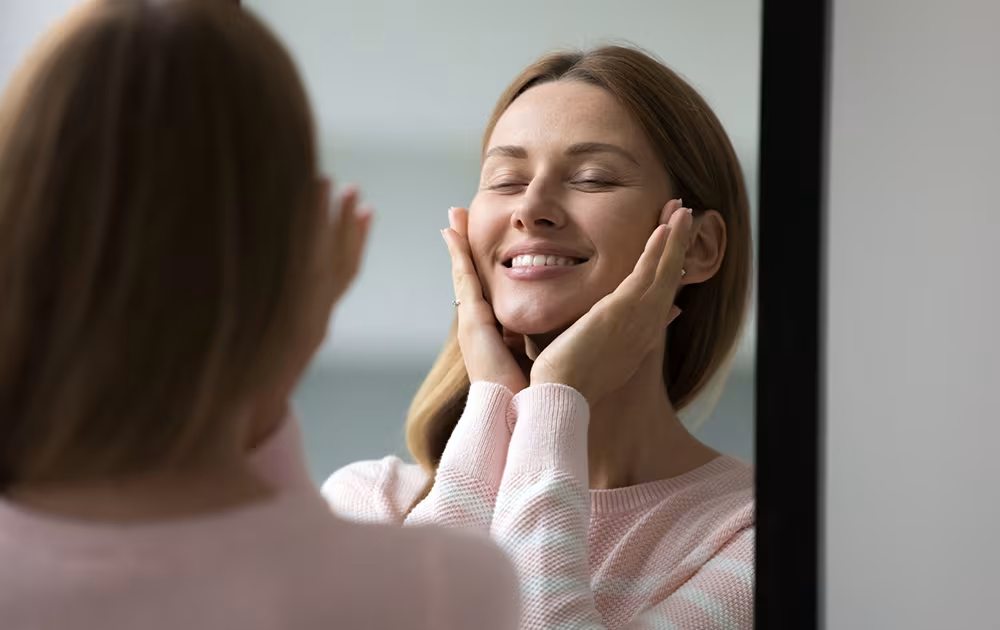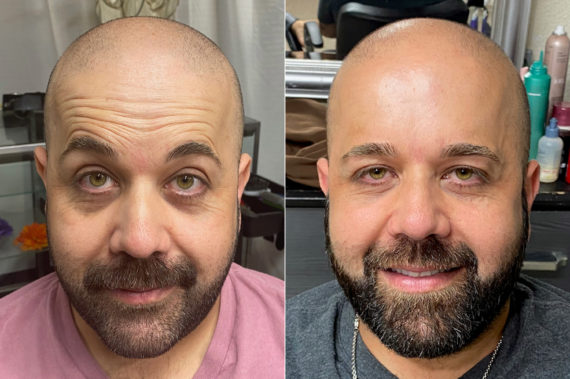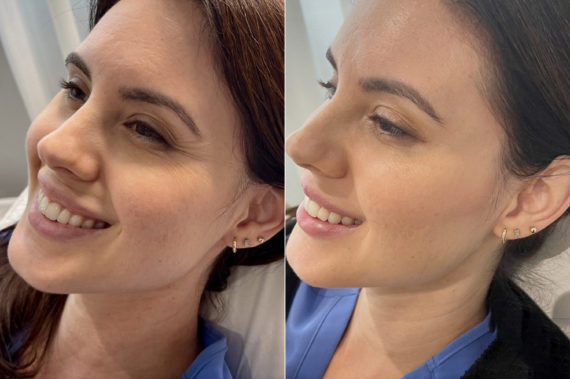
Have you ever wondered how quickly you can bounce back after Botox? This popular facial treatment for dynamic wrinkles is known for its minimal downtime, but what does recovery really look like? Whether you’re prepping for your first session or simply curious about the healing process, understanding the Botox recovery timeline is key.
Botox offers a fast, effective way to smooth out signs of aging without surgery, but mild swelling after Botox is also possible in the first day or two. Knowing what to expect post-treatment—including common side effects, recovery time, and aftercare tips—can make all the difference. In this guide, we’ll break down the recovery process step by step so you can step into your results with total confidence.
How Long Does Swelling Last After a Botox Procedure?
Swelling after a Botox procedure is usually mild and short-lived. Most patients experience minor swelling at the injection sites that begins to subside within a few hours and is mostly resolved within 24 to 48 hours. In some cases, very slight puffiness may linger for a few days, particularly for individuals with sensitive skin. Applying a cold compress immediately after the treatment and following your provider’s aftercare instructions can help minimize swelling and speed up recovery.
Botox Recovery Time Day by Day
Everyone’s body reacts a little differently to botulinum toxin injections, but there’s a general recovery timeline that can help you set expectations and feel more in control of your Botox experience. Understanding what typically happens each day after your treatment can help you avoid surprises and plan accordingly for the smoothest recovery possible.
First 24-48 Hours
During the first 24 hours after your Botox procedure, you may notice mild swelling, slight redness, or tiny bumps at the injection sites—these are completely normal and usually resolve quickly. It’s important to avoid touching or massaging the area to prevent the product from spreading. Some people experience a mild headache or tightness in treated muscles. Staying upright, avoiding strenuous activity, and applying a cold compress (if needed) can help ease any discomfort. By the end of the first 48 hours, most people feel fully back to normal.
Stage 1
Days 3-7
As you enter days 3 to 7, you may start to notice the early effects of your Botox treatment becoming visible—muscles begin to relax and dynamic wrinkles start to soften. Any lingering swelling or redness should be minimal by this stage. It’s still a good idea to avoid intense exercise or facial massages, as these can interfere with the product settling properly. This is a transitional period where results begin to take shape, but final outcomes are still developing.
Stage 2
Days 8-14
By the second week, the full effects of your Botox injections are typically becoming visible. Muscles in the treated areas have relaxed, and dynamic wrinkles appear noticeably smoother. This is when most patients start enjoying their final results. Any remaining side effects, such as mild tightness or tenderness, should have faded by now. It’s a great time to assess the outcome with your provider, especially if it’s your first Botox experience, as this phase provides a clear picture of how your facial expressions have evolved post-treatment.
Stage 3
Longer Term (3-6 months)
The effects of Botox typically last between three to six months, depending on factors like your metabolism, activity level, and how your body responds to botulinum toxin. As the product gradually wears off, muscle movement will slowly return, and dynamic wrinkles may begin to reappear. Regular maintenance treatments are often recommended to preserve your results and keep your skin looking smooth and youthful. Tracking your response over time with your provider can help optimize your long-term Botox plan.
Stage 4
Possible Risks and Side Effects of Botox Injections
Botox is widely regarded as a safe procedure, especially when performed by a qualified and experienced provider. That said, like any injectable treatment, it can come with minor side effects—most of which are temporary and resolve on their own. Aside from a possible allergic reaction, which is rare, patients may experience some mild symptoms that typically subside within a few days. Below are some of the most commonly reported issues:
Mild pain at the injection site
Some patients experience a slight stinging or aching sensation around the injection areas shortly after the cosmetic procedure. This discomfort is usually very mild and resolves within a few hours. You can use a cold compress to ease any soreness, but avoid rubbing or pressing on the treatment area. If the pain lingers beyond a day or becomes more intense, it’s a good idea to contact your provider to rule out any complications.
Swelling and bruising
Swelling and bruising are among the most common adverse effects of Botox injections. These typically occur around the injection sites and are more likely in patients with sensitive skin or those taking blood-thinning medications. Bruising usually appears as a small, faint discoloration and fades within a few days. Inflammation and swelling, on the other hand, tend to resolve within the first 48 hours. Using a cold compress and keeping your head elevated can help minimize both issues and speed up the healing process.
Headaches
Some patients may develop mild headaches after receiving Botox injections, typically within the first day or two. These headaches are usually short-lived and respond well to over-the-counter pain relievers like acetaminophen. The exact cause isn’t always clear, but it may relate to the injection process or temporary tension in facial muscles. If headaches persist or become severe, it’s important to consult your provider to rule out any unusual reactions.
Flu-like symptoms
In some cases, patients may experience flu-like symptoms such as fatigue, mild fever, or general malaise shortly after receiving Botox injections. These symptoms are typically short-term and should subside within a day or two. While uncommon, they may be the body’s natural response to the botulinum toxin type A. Rest, hydration, and avoiding strenuous activities during this period can help you recover more comfortably. If these symptoms persist or worsen, consult your provider to rule out any underlying issues.
Botox Aftercare for Best Results
Proper aftercare plays a big role in getting the most out of your Botox treatment. While the procedure itself is quick and minimally invasive, your post-treatment behavior can affect how well the botulinum toxin settles and how long your results last. Following a few simple steps can reduce side effects and help your skin look its best.
Avoid touching your face
One of the most important things to remember after your Botox treatment is to avoid touching, rubbing, or massaging your face, especially the areas that were injected, for the first 24 hours after treatment. Doing so can cause the botulinum toxin to migrate to unintended areas, potentially affecting surrounding muscles. Letting the product settle undisturbed is crucial for achieving precise, natural-looking results.
Avoid wearing any makeup
For at least 24 hours after your Botox treatment, it’s best to avoid wearing makeup, especially over the injection sites. Applying makeup too soon can increase the risk of introducing bacteria to the area or irritating the skin. It can also cause unnecessary pressure while applying or removing it, which might interfere with the placement of the botulinum toxin. Giving your skin a short break allows it to recover and reduces the risk of any unwanted side effects.
Stay upright
For the first few hours after your Botox treatment, it’s essential to remain upright and avoid lying down. Staying vertical helps prevent the botulinum toxin from migrating to unintended areas and allows it to settle properly in the targeted muscles. You should also avoid bending over or reclining too far back during this time. A little posture awareness goes a long way in protecting your results.
Apply a cold compress
Using a cold compress on the treated areas can help reduce minor swelling, bruising, or tenderness after your Botox procedure. Gently apply it for short intervals—about 10 to 15 minutes at a time—without pressing too hard. This can soothe the skin and encourage faster recovery, especially during the first 24 to 48 hours. Just be sure the compress is clean and wrapped in a soft cloth to avoid irritating the injection sites.
Stay hydrated
Drinking plenty of water after your Botox treatment helps support your body’s natural healing process and can contribute to healthier skin overall. Proper hydration may also help your results last longer by keeping your skin plump and resilient, while reducing fluid retention. As part of your aftercare, it’s also best to avoid alcohol for 24 hours, as it can increase your risk of bruising and dehydration.
Protect your skin from the sun
Sun exposure can irritate the skin after Botox and potentially affect your final results. It’s best to stay out of direct sunlight for the first couple of days and use a broad-spectrum sunscreen if you need to be outdoors. Wearing a wide-brimmed hat and sticking to shady areas can offer additional protection. Avoiding UV rays during this time helps preserve your skin’s health and supports optimal healing.
Get the Most Benefits Out Of Your Botox Treatment
Choosing an experienced specialist for your cosmetic injections isn’t just a good idea—it’s essential. A skilled injector understands facial anatomy, knows how to minimize side effects, and can tailor the treatment to your unique features. In expert hands, Botox doesn’t just relax wrinkles in your forehead—it enhances your natural beauty safely and effectively.
Dr. Homer Hojjat is a double-board-certified facial plastic surgeon and otolaryngologist-head and neck surgeon, and a proud member of the CSFPS. With advanced training and a research background focused on the influence of technology on cosmetic trends, Dr. Hojjat uses only proven, minimally invasive techniques to achieve subtle, beautiful results. Call our clinic today at 949-996-3274 or visit our contact page to schedule your personalized Botox appointment.
FAQ







